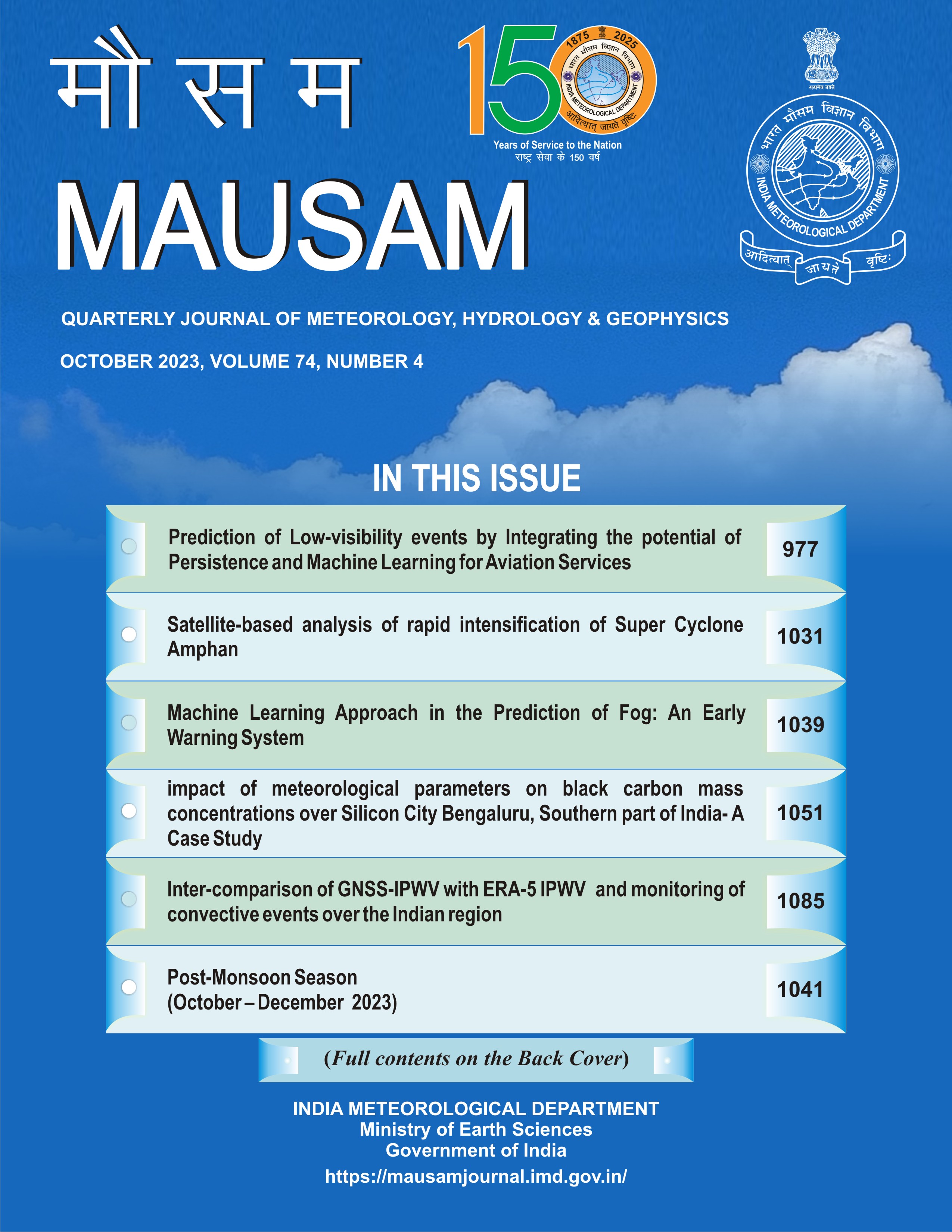Investigating the Long-Term Effects of Anthropogenic Practices on Soil Features
DOI:
https://doi.org/10.54302/mausam.v75i4.6462Abstract
Anthropogenic practices have been increasingly conducted on the rise in addressing the escalating
demands for socioeconomic development, resulting in significant impacts on land ecosystems. This research seeks to
evaluate the influence of anthropogenic activities on soil features in mountainous regions of Vietnam by focusing 84
samples collected from 12 locations across Lam River Basin at seven soil profiles (0-10, 10-20, 20-30, 30-40, 40-60, 60-
80 and 80-100 cm).
The findings reveal notable differences in soil texture among land use types (LUTs). Forest cover lands (FCLs),
showed the least amount of sand content, varying from 29.7% to 37.6%, while unplanted and bare lands (UBLs) had the
highest sand ratios, up to 53.9%. FCLs exhibited lowest bulk density (BD), soil porosity (SP) and soil electrical
conductivity (EC) and C:N ratio with respective ranges of 0.93-1.29 g.cm-3, 32.7-36.5%, 0.526-0.743 mS.m-1 and
6.74 -8.52, respectively.
In contrast, crop cultivation lands (CCLs) demonstrated higher values for BD (1.17-1.25 g/cm3), SP (39.25-
43.19%), EC (0.583-0.792 mS.m-1) and C:N ratio (11.27-15.77). UBLs, on the other hand, exhibited even highest values
up to 1.23-1.36 g.cm-1, 43.19-49.62%, 0.437-0.619 mS.m-1 and 11.68-16.58% and displayed high levels of exchange irons
and soil organic content compared to FCLs. Other factors such as pH varied little in space between the sampled soil
locations and along the soil profiles. Overall, the study indicates that anthropogenic practices have impacts on the soil
features across the study area.
Downloads
Published
How to Cite
Issue
Section
License
Copyright (c) 2024 MAUSAM

This work is licensed under a Creative Commons Attribution-NonCommercial 4.0 International License.
All articles published by MAUSAM are licensed under the Creative Commons Attribution 4.0 International License. This permits anyone.
Anyone is free:
- To Share - to copy, distribute and transmit the work
- To Remix - to adapt the work.
Under the following conditions:
- Share - copy and redistribute the material in any medium or format
- Adapt - remix, transform, and build upon the material for any purpose, even
commercially.



